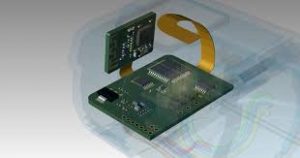Advantages of Rigid Flex Circuits
Rigid Flex Circuits
Rigid flex circuits are ideal for applications that require the rigidity of a traditional PCB but need the flexibility that a flex circuit offers. These hybrid circuits can also be used in places where other interconnect solutions cannot, and they can save space, reduce weight, and offer vibration-free resistance. This article explores some of the advantages of using rigid flex circuits and explains how these flexible printed circuit boards are helping engineers and designers create innovative new electronic devices.
Rigid-Flex PCBs are often used for devices that need a combination of rigid and flexible areas. This can be useful for small electronic gadgets like smart jackets, pacemakers, or mobile phones that need to fit in compact spaces but still need a good connection for the circuit.
These hybrid PCBs can help to reduce the number of components in an assembly, making it easier for OEMs to get their products to market. By replacing multiple rigid PCBs, connectors, and wire harnesses with one integrated rigid flex circuit board, manufacturers can save time, labor, and money in the assembly process. This can also free up space for other functions, such as reducing the size of a device or improving its overall functionality.

Advantages of Rigid Flex Circuits
In addition to saving time, labor, and money in the assembly, rigid flex circuits can improve the reliability of a device, as they can be designed to withstand more mechanical stress than standard circuit boards. The flex areas of these circuits are generally made from high-quality materials such as copper and thin polyimide films, and they can also be etched to ensure their structural integrity. Rigid flex circuits can also be soldered to other rigid PCBs with HotBar or a similar process, which means they can be assembled into an enclosure with other components without the need for external connectors.
The design of rigid flex circuits allows them to be bent, twisted, or folded, which makes it easy for technicians to work on them during routine maintenance cycles. This means that they can be repaired or replaced in tight spots that would be difficult to reach with a conventional rigid PCB. In addition, these PCBs can be reworked to fix issues that occur during production.
As the demand for more sophisticated and compact electronics grows, rigid flex circuits are increasingly being used to replace standard rigid PCBs in many different devices. The flexibility and durability of these hybrid circuits make them an attractive option for medical devices, wearable technology, and automotive devices. The rigid areas of these circuits can withstand the rigors of an active lifestyle, and the flex sections can be designed to mirror shapes found in the human body for greater comfort. These innovations are driving the development of next-generation medical, automotive, and consumer electronics. This is all possible thanks to the advanced technology offered by rigid-flex PCBs. With the right design tools, PCB makers can make the most of this powerful and versatile technology to produce complex circuits that meet even the most stringent demands.